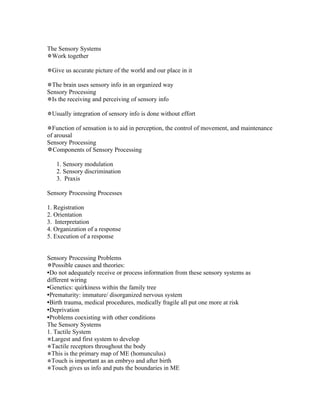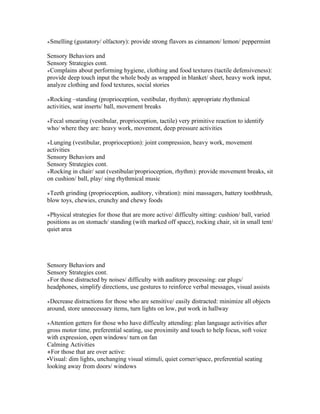The document discusses the sensory systems and how they work together to give us information about the world. It describes the main sensory systems - tactile, vestibular, proprioception, auditory, visual, olfactory, and gustatory. It explains how sensory processing occurs and potential problems with sensory processing. The roles of different neurotransmitters are outlined. Sensory behaviors and strategies to address them are provided, along with calming and alerting activities.







